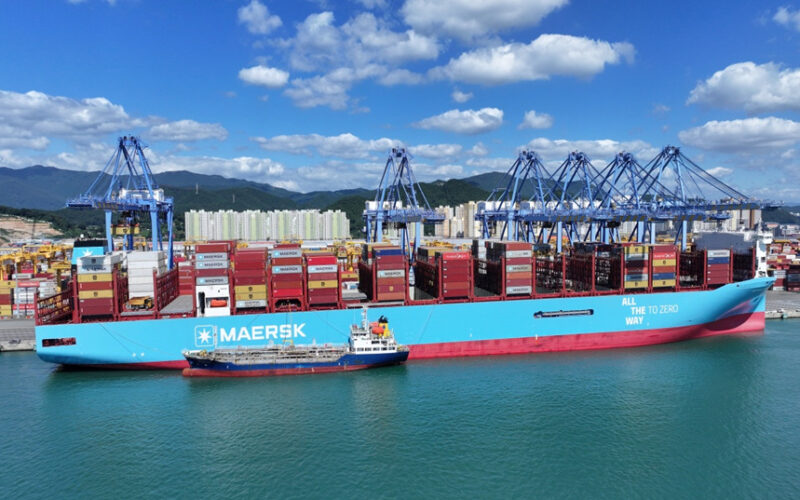South Korea has successfully conducted its first Simultaneous Operations (SIMOPs) of ship-to-ship methanol bunkering at Busan New Port.
The operation was concluded after an 11-hour process that supplied approximately 3,000 tonnes of methanol at Busan New Port Terminal 2 (PNC) during ongoing cargo unloading. This follows a successful LNG bunkering SIMOPs operation at Busan New Port in August.
The Ministry of Oceans and Fisheries (MOF) spearheaded this initiative as part of its plan to build an Eco-friendly Ship Fuel Supply Chain, announced in November 2023.
The Busan Port Authority (BPA) supported the methanol bunkering demonstration project, offering exemptions on port facility usage fees and coordinating with relevant agencies to review safety protocols through an inter-agency consultative body.
Korean Register (KR) has reportedly played a pivotal role in providing technical support for the development of a methanol bunkering safety system. KR’s contributions include developing standard operating procedures, defining safety management zones, and creating guidance for self-safety management plans.
READ: Topsoe set to boost hydrogen production in South Korea
This accomplishment is expected to significantly enhance the competitiveness of South Korean ports in the growing market for eco-friendly shipping.
The successful implementation of SIMOPs, which allows for simultaneous cargo operations and supply of green fuel, is particularly attractive to shipping companies aiming to reduce costs and improve efficiency.
KANG Joonsuk, CEO and President of BPA, stated: “This successful demonstration marks a monumental achievement, showing that Busan Port is fully capable of supplying methanol.
“We plan to enhance Busan Port’s global competitiveness by developing infrastructure and advancing technology to expand eco-friendly fuel bunkering, positioning it as a leading green port on the world stage.”
In April, Busan New Port announced the opening of its first entirely automated terminal in Korea. Hybrid tests were conducted for horizontal transport using Automated Guided Vehicles (AGVs) in preparation for the opening of the sixth and final terminal at Busan New Port.








